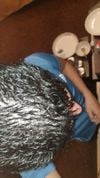community Theory As To Why Oral Minoxidil Might Be Helpful To People Compared To Topical Minoxidil
Oral minoxidil may be more effective than topical due to uniform distribution and systemic activation, but can cause side effects like puffiness. Adding tretinoin to topical minoxidil can enhance its effectiveness by aiding conversion to its active form.
